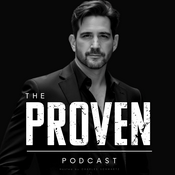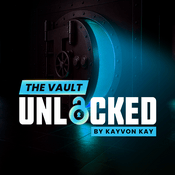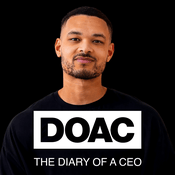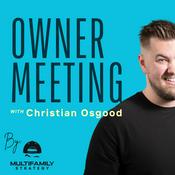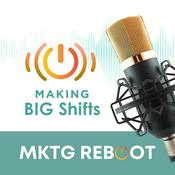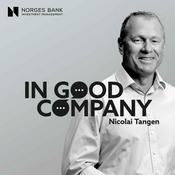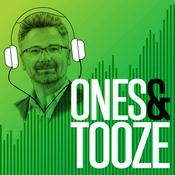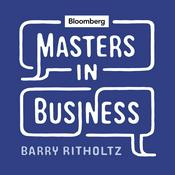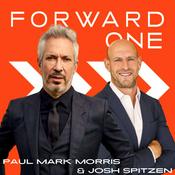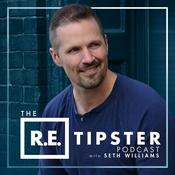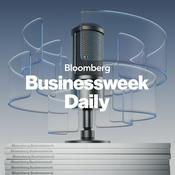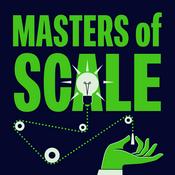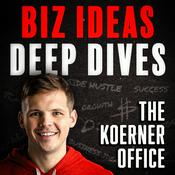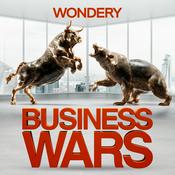325 episodes
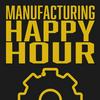
269: Entertainment Meets Automation: How andyRobot is Leveraging Robotics for Lady Gaga, Drake, and More
1/06/2026 | 53 mins.
Industrial robots on a factory floor can be difficult, to say the least. Industrial robots on a concert stage, in front of 20,000 people, on a two-minute setup clock are a whole different challenge.In this episode, we talk with Andy Flesser - computer animator turned “robot animator,” whose work has helped bring robotics into live entertainment and film - about what that kind of pressure does to how you think about automation. Why preparation starts way earlier than most teams realize. And why some of the best lessons for manufacturing come from places that don’t look like factories at all.We also get into where Andy thinks robotics actually makes sense, where it probably doesn’t, and why the future of robots might be less about machines walking around and more about environments doing work around us.If you’ve ever operated an automated system and felt that knot in your stomach when something didn’t behave the way you expected, you’ll recognize a lot of what he’s talking about here.In this episode, find out:How Andy went from animation into robotics, and why early robot programming felt more like deciphering a code than writing softwareWhat it was like putting robots on tour with Bon Jovi, and why live entertainment turned out to be one of the toughest automation environments imaginableWhy a robot failing on a concert stage creates a very different kind of pressure than a robot failing behind factory wallsWhat really happens on a movie set when robotics are involved (including Black Adam), and why even “small” changes still need serious testingWhy Andy sees huge potential for robotics in medical applications, especially in areas most people don’t talk aboutA take on the future of robotics that skips the humanoids and focuses on buildings, rooms, and systems doing the work insteadHow entertainment can be a surprisingly effective way to pull people into robotics and automation careersEnjoying the show? Please leave us a review here. Even one sentence helps. It’s feedback from Manufacturing All-Stars like you that keeps us going!Tweetable Quotes:“Every single show, every inch, every second of time is so expensive. When something goes wrong, it’s happening right in front of everybody.” “All the research and development in the world doesn’t exist unless you actually have sales.” “I think the future isn’t robots walking around your house. I think the house will be the robot and you’ll be inside of it.”Links & mentions:andyRobot / Robotic Arts – Andy’s website and studio, where industrial robots get repurposed for live shows, touring, and filmRobot Animator – The software Andy built to let...

BONUS: More Than Iron City Beer: A Look Inside Pittsburgh Brewing Company
1/02/2026 | 32 mins.
In true Manufacturing Happy Hour style, we head back to Pittsburgh, PA to drink the region's most iconic beer - Iron City - in an iconic Pittsburgh manufacturing facility. We sit down with Alex Gonzalez, Plant Manager at Pittsburgh Brewing Company. Part of our Made Here Series with the Industrial Solutions Network.Mentioned in this episode:Industrial Marketing Summit 2026The Industrial Marketing Summit is the go-to gathering for marketers working in the manufacturing, engineering and industrial sectors. Built by Gorilla 76 and TREW Marketing, IMS delivers strategic insight, hands-on learning and true community. Whether you’re a team of one, or leading a scaled marketing department, you’ll walk away ready to market smarter, lead stronger and impact your business. Make sure to use the code "happy hour" at checkout for $100 off registration.Industrial Marketing Summit 2026

268: Reindustrialization in the Heartland, Live from +Venture North 2025
12/30/2025 | 1h 14 mins.
Reindustrialization isn’t going to be driven by a single mega factory or a headline-grabbing announcement on the coasts. It’s going to be built region by region, by places that already know how to make things and are willing to evolve how they do it.This episode was recorded live at +Venture North in Milwaukee, bringing together investors, founders, and operators to talk candidly about what it really takes to scale manufacturing in the heartland. The conversations cut through the buzzwords and focus on fundamentals: affordable power, experienced talent, corporate customers, and ecosystems that actually support manufacturers beyond the pitch deck.You’ll hear why innovation may start anywhere, but scale almost always moves to regions with space, infrastructure, and people who know how to run plants. We also dig into how legacy industries adopt new technology without putting uptime at risk, and why reindustrialization won’t happen if workforce strategies stop at new graduates instead of upskilling the people already on the floor.In this episode, find out:Why reindustrialization scale-up is likely to happen “between the coasts” (and what regions need to compete)How places like Tulsa and Milwaukee can win by leaning into their industrial DNA instead of trying to copy Silicon ValleyWhy the cost of power is quietly becoming one of the biggest deciding factors in where manufacturing expandsHow Carmen Industries is electrifying thermal processes (and why process engineers hate watching usable heat go “out the roof”)What it really takes to get legacy plants comfortable adopting new technology without risking uptime or performance metricsWhy reindustrialization requires upskilling today’s workforce, not just training new entrantsWhat healthy ecosystems measure (and what they don’t): founders getting funded, exits, corporate engagement, and a community that’s genuinely welcomingEnjoying the show? Please leave us a review here. Even one sentence helps. It’s feedback from Manufacturing All-Stars like you that keeps us going!Tweetable Quotes:“Once you start needing manufacturing facilities for making hundreds, thousands of products, that’s when companies really start looking elsewhere.” - Rosa Hathaway“If we only look at giving new manufacturing skills to 18- to 22-year-olds, we will never meet the workforce needs fast enough to reindustrialize the country.” - Bill Berrien“Fifty percent of all end energy use is for thermal management, heating things up or cooling things down, and we do it in very inefficient ways.” - David TseLinks & mentions:NVNG Investment Advisors, a venture capital fund-of-funds backed by local corporations, focused on strengthening industrial innovation ecosystems.

267: How Meaningful Work, Optimism, and Relationships Drive Manufacturing Excellence, An Interview with Kathy Miller, Author of MORE is Better
12/23/2025 | 53 mins.
Manufacturing leadership is more than just charts, tools, and process maps. It requires people who understand the routines, pressures and drivers within a factory, and how to bring out the best in the people behind it. In this episode, keynote speaker, certified leadership coach and business transformation advisor, Kathy Miller returns to the show to share some ideas from her latest book, MORE is Better, a framework built from years of leading operations and studying what drives excellence in manufacturing.Rather than starting with strategy or systems, Kathy begins with the human elements: helping people find meaning in the work they do, creating a culture where problems feel solvable, and building the relationships that make teams stronger and more resilient. Her stories come straight from plant floors navigating Lean initiatives, new technology, talent turnover, and the day-to-day realities of production.For leaders trying to build long-term capability in their teams, Kathy reminds us that the factories that thrive are the ones that invest in both performance and people. In this episode, find out:Why meaningful work matters more than ever, and how to help people see their impactThe difference between autonomy and agency and why agency is what drives pride, ownership, and problem-solving on the plant floorHow optimism becomes a cultural engine, not a personality traitWhere Lean manufacturing and positive psychology intersectHow leaders at every level shape culture through micro-moments of connection that build trust, resilience, and collaborationWhat digital transformation and AI mean for manufacturing workersHow to “do a little more today” with small, practical leadership actions that build stronger workplaces one conversation, one moment, one choice at a timeEnjoying the show? Please leave us a review here. Even one sentence helps. It’s feedback from Manufacturing All-Stars like you that keeps us going!Tweetable Quotes:“A key aspect of lean manufacturing is eliminating waste. We don’t want people creating scrap. Who wants to work on something that’s going to end up being waste? Don’t you want to work on the product itself?”“Small choices really build our culture, our performance, and our leadership legacy, and that happens one little shift at a time.”“Optimism is really about that ability to look at when things go wrong and know that you can solve the problem. It's temporary, it's specific, and it's not going to be the end of the world.”Links & mentions:MORE is Better: Leading Operations with Meaning, Optimism, and Relationships for Excellence, by Kathy Miller, a practical handbook for manufacturing leaders, grounded in psychology and real plant experience, focused on building strong cultures that drive performance.More 4 Leaders, Kathy’s website and the home of More Mentor, her AI-powered coaching tool designed to help leaders work through real-world challenges using the principles from MORE is Better.Episode 97 featuring Kathy Miller, our first conversation with Kathy, aired June 28, 2022, where she shares her journey from running global manufacturing operations to coaching leaders through culture, leadership, and transformation.

266: A Century of Cookware Manufacturing and the Impact of Automation and Reshoring with David Duecker, President of SynergyOps
12/16/2025 | 34 mins.
A century ago, two cookware companies were born 12 miles apart in Wisconsin. One was bought right after World War II by a door-to-door salesman who converted it back to cookware after it had been repurposed for munitions. Today, those two companies have merged into SynergyOps, a 115-year-old legacy manufacturer with first through fourth generation employees still walking the factory floor.David Duecker, President of SynergyOps, joins the show from the factory floor in West Bend to discuss the company's evolution, their approach to automation, and what reshoring can look like for manufacturers. He explains how West Bend evolved with consumer demand over the decades, expanding into appliances like coffee makers and popcorn poppers, but when appliances started moving overseas in the 80s, they made a critical decision: divest and double down on their core strength, high-quality cookware.David's vision for the factory of the future isn't lights-out automation, it's highly automated with the people they have today, just doing different jobs. He also shares why manufacturing sustainability isn't just about solar panels and water recycling; it's about corrugated boxes coming from five miles down the road instead of across an ocean.In this episode, find out:How SynergyOps retains institutional knowledge across four generations of employeesWhy David looks for problem solvers who are intuitive and curious during hiringDavid's vision for the factory of the future: highly automated, but still powered by peopleHow his background as a customer in the bike industry shapes his approach to contract manufacturingThe chemistry problem the cookware industry is trying to solve around PFAS-free non-stick coatingsWhy tariffs and COVID got manufacturers seriously rethinking single-source supply chainsHow partnering with Moraine Park Technical College helps build the next generation of skilled craftspeopleWhy Synergy Ops brings retirees back to lead tours and train new hiresEnjoying the show? Please leave us a review here. Even one sentence helps. It’s feedback from Manufacturing All-Stars like you that keeps us going!Tweetable Quotes:“As organizations, we’re always looking to expand or go to our adjacencies to try and grow our market. Sometimes it’s important to focus on your core and what you’re really good at. Go all in on that and penetrate the market that way.”“The factory of the future for us is highly automated with the people we have today, who are able to solve problems and make an impact every day, but they may just be doing a different job.” “We never talk about the sustainability of manufacturing in the US. People often think about it in terms of water, air and gas, but sustainability can also mean cutting down on air, freight or ocean travel time too.”Links & mentions:SynergyOps, a contract manufacturer and private label partner with over a century of manufacturing history in West Bend, Wisconsin, specializing in cladded stainless steel and cast aluminum cookware for established and emerging brands.Moxa, delivering the reliable and secure connectivity foundation that advanced analytics and AI depend on, with solutions in edge connectivity, industrial computing, and network infrastructure. Make sure to visit http://manufacturinghappyhour.com for detailed show notes and
More Business podcasts
Trending Business podcasts
About Manufacturing Happy Hour
Listen to Manufacturing Happy Hour, Proven Podcast and many other podcasts from around the world with the radio.net app

Get the free radio.net app
- Stations and podcasts to bookmark
- Stream via Wi-Fi or Bluetooth
- Supports Carplay & Android Auto
- Many other app features
Get the free radio.net app
- Stations and podcasts to bookmark
- Stream via Wi-Fi or Bluetooth
- Supports Carplay & Android Auto
- Many other app features


Manufacturing Happy Hour
download the app,
start listening.
